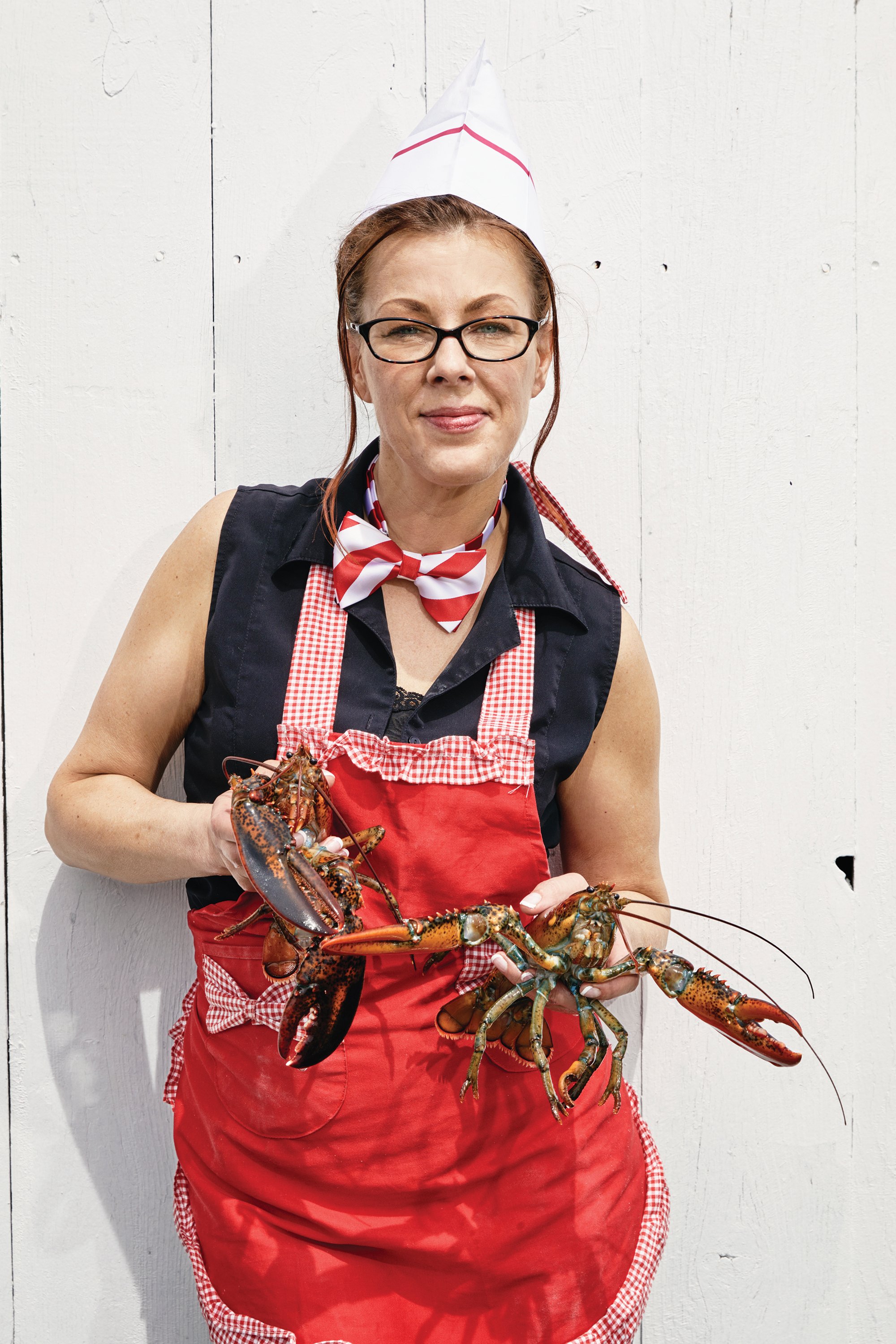
Lobster
Must Get
Stoned
Photographed by Michael D. Wilson
Is your lobster looking a little glazed over? Does it suddenly seem tired all the time? Is its favorite movie The Big Lebowski? Then it might have come from Charlotte’s Legendary Lobster Pound, where owner Charlotte Gill has been experimenting with ways to help her crustaceans feel no pain. Her favorite method? Getting them high.
ON CHARLOTTE GILL’S FIRST DAY of first grade at Southwest Harbor’s Pemetic Elementary, on Maine’s much-touristed Mount Desert Island, Mrs. Dodge instructed the students to place hands over hearts for the Pledge of Allegiance. But Gill, who had just moved to Maine, wasn’t used to the r-dropping accent. She heard hand over hat, and though she wasn’t wearing a hat, she raised her right hand and held it flat above her head. Her new classmates burst out laughing. “That’s sort of how school went for me,” Gill says, “I was a bit of a fish out of water.”
The summer after second grade, she decided to make some money. She sold drawings to neighbors for a dime apiece and picked raspberries behind her family’s home on Clark Point Road to sell at the Claremont Hotel. “Every week, I’d add up my earnings, go across the street to the pier, and buy as many lobsters and crabs as I could,” she recalls. “Then, I’d very proudly walk them down to the end of the pier — the lobstermen standing there watching probably thought this was pretty amusing — and I’d drop them back into the harbor.”
Now, some 40 years later, Gill owns Charlotte’s Legendary Lobster Pound. In 2011, she took over a dilapidated former ice cream stand, a few miles beyond downtown Southwest Harbor, on the way to Acadia National Park’s Seawall Campground. As a kid, she used to go there for scoops and to play in the adjacent field. Once she started selling lobster rolls there — regular size and foot-long — she decked out the midcentury shack in a jumble of red and white and stocked it with hula-hoops, squirt guns, and wiffle-ball equipment, plus stick horses and real pet goats. The yoga mats stacked out back are for picnicking or for yoga. “I tell people that if you could view this place from outer space, it would just glow with positive energy,” she says. “People are happy here.”
Except that Gill hasn’t always been happy there. Recently, she texted me a quote from Fyodor Dostoevsky’s Brothers Karamazov:
“Imagine that you are creating a fabric of human destiny with the object of making men happy in the end, giving them peace and rest at last. Imagine that you are doing this but that it is essential and inevitable to torture to death only one tiny creature . . . in order to found that edifice on its unavenged tears. Would you consent to be the architect on those conditions? Tell me. Tell me the truth.”
Was the edifice of her livelihood, Gill wondered, founded on the unavenged tears of hundreds of thousands of lobsters? “At heart, I’m an animal lover,” she told me the first time I met her. “I know it sounds hugely hypocritical, but I’ve really struggled with that ever since starting this place.”

Her crisis of conscience actually goes back even farther. In 2010, she was leasing Bar Harbor Lobster Pound, on the other side of the island, when the man she was dating died of heart failure, at age 47. “The next day, I had to go and cook lobsters, and I sat there with them for the longest time, having the greatest difficulty putting them in the pot,” she says. “But I had the order, and I put them in. Right away, I had an overwhelming feeling that I’d just done something terrible, so I lifted the lid. I saw what was happening, all the thrashing. It would have been worse at that point to take them out.”
At Charlotte’s Legendary, she started a buy-and-release program — anyone could purchase live lobsters at cost if they wanted to return them to the ocean. But the whole business kept bothering her, and one night last year, she prayed on it: “Hey universe or God or whoever, what can I do to make this better? I don’t want to turn this into a lemonade stand, but I will if that’s what you want.”
She woke up in the wee hours of the following morning with a plan: she’d try to get lobsters high.
THE MOUNT DESERT ISLANDER, a local weekly, was first to report on what Gill calls her “high-end lobster” project. The story landed in mid-September, and a few days later, Gill saw a headline online about a Maine lobster pound sedating lobsters with cannabis. Her first, mistaken reaction was, “Whoa! I didn’t realize someone else is doing this too.” Soon, major news outlets from around the world were calling. “It was so nonstop, we had to take our phone off the hook,” she says. “I thought it would last a couple of days, but it went on for a solid two weeks.”
By that point, Gill had only dosed one lobster, an average-size guy with a damaged claw whom she named Roscoe. The setup for the procedure was simple: She took an airtight plastic container and poked a hole in the lid, through which she could insert a straw. Next, she filled the container partway with seawater, put Roscoe inside, and snapped the lid shut. She packed a glass lobster-claw pipe (from a Bar Harbor souvenir shop), and then she and several staff and friends took turns blowing hits through the straw. “Basically,” she says, “it’s a lobster bong.”
A couple of minutes later, they popped off the lid and found a thoroughly zonked lobster. Gill kept him in the tank for another few weeks before releasing him, “for his contributions to science.”
A Nashville country duo memorialized Roscoe in a song set to the tune of Bobby McFerrin’s “Don’t Worry, Be Happy.” Puns — “baked, then boiled,” “into the pot,” “some herb before the butter” — proliferated across the internet. But while the har-har clickbait novelty of the experiment clearly drove much of the public fascination, genuine concern about how we treat lobsters has ebbed and flowed over time, and Roscoe’s big moment coincides with a high-water mark of distress.
Last December, People for the Ethical Treatment of Animals released undercover video from inside the Maine Fair Trade Lobster processing plant in Gouldsboro, showing workers dismembering lobsters that remained alive throughout the process. (PETA made similar claims, after releasing footage, against Sea Hag Seafood in Tenants Harbor and Linda Bean’s Maine Lobster in Rockland in recent years. Both of those facilities are now closed.) The group also rebooted a high-visibility ad campaign in the Portland and Bangor airports to discourage people from eating lobster — “I’m ME, Not MEAT,” the posters proclaimed. Meanwhile, in landlocked, reluctant-to-take-sides Switzerland, the national government made headlines last year for banning the boiling of live lobsters without stunning them first.
Of course, whether or not lobsters care what we do to them is an open question. A recent Popular Science headline neatly summed up the situation: “No one knows if lobsters feel pain, which makes boiling them alive rather complicated.” Humans can’t even gauge one another’s pain without a subjective report — hence those smiley-to-frowny pain scales in doctor’s offices. Some animals have nervous systems similar to ours, and it’s reasonable to assume they experience pain much as we do. But lobster nervous systems are something else entirely, made up of a small brain threaded to nerve clusters along the length of the body.
Before I met Charlotte Gill, I’d eaten lobster all sorts of ways, from classic (in a roll, in bisque) to inadvisable (on pizza, in ice cream). And yet, I had never cooked one myself. At the fish market nearest where I live, in Camden, I found the staff doesn’t ask you to pick which lobster you want, and knowing what I was going to do to that lobster, it was nice to forfeit some agency. At home, I laid the bag flat on the floor, but the 1½-pound bug stayed pinned to a back corner, its tail pressed upward, like how a scorpion carries its stinger. If I were to anthropomorphize, I’d say it looked scared.
When the water hit a full boil, I shook it out onto the counter as gently as I could. It curled its tail underneath itself and scooted backward. One of its antennas was broken off near the base. As I grabbed it by its midsection and lifted it toward the steaming pot, it spread its claws and legs, but I dropped it in headfirst. Its tail spasmed three or four times. Its legs twitched. After a minute or two, it was still. I thought the process might have unsettled me more than it did. I’m not eager to repeat it.
“I KNOW THERE’S A LOT OUT THERE ABOUT HOW LOBSTERS DON’T FEEL PAIN,” Gill told me one morning before opening, watching her lobsters skitter over one another in the tank. “But I can testify, from the thousands I’ve cooked, that they definitely feel pain.” She’s seen them try to hold on to the edge of the pot on the way in, try to scramble back out, beat their tails in a manner that seems frantic, and sometimes even jettison their claws, a fight-or-flight response.
Ethicists sometimes evoke what’s known as the “precautionary principle” — basically the notion that it’s better to be safe than sorry, but with a fancy name so that policy-making types can bandy it about. Back in the 1970s, for instance, when people were only pretty sure that carbon dioxide was warming the planet, it might have been smart to err on the side of caution and try to limit emissions, rather than waiting and seeing. Applied to things we eat, the principle suggests that if we don’t know whether an animal can experience pain, we should assume it can.

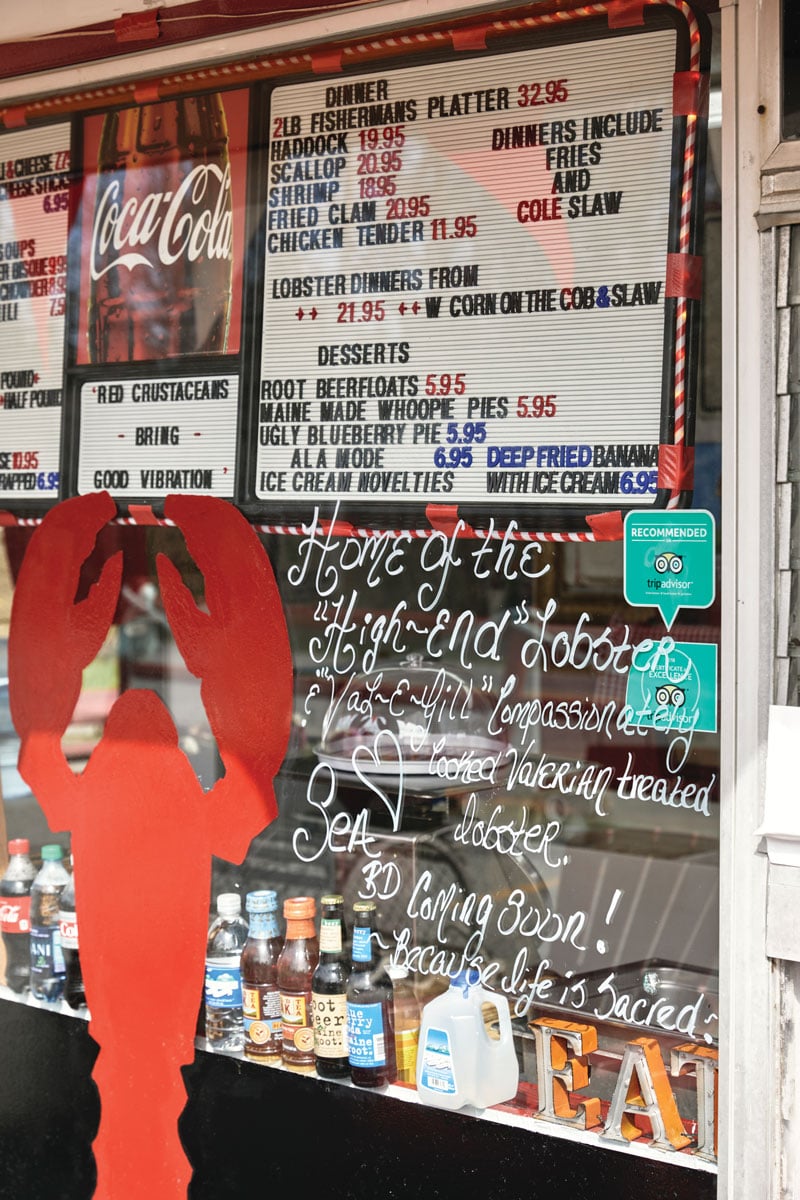
But the federal Humane Slaughter Act — which requires that animals be “rendered insensible to pain by a single blow or gunshot or an electrical, chemical or other means that is rapid and effective” before butchering — applies only to cows, pigs, and other large four-legged livestock. Maine’s rules are essentially the same.
Gill isn’t alone in thinking that lobsters deserve at least a similar degree of courtesy. Some chefs will stab a lobster between the eyes, trying to hit its tiny brain and quickly incapacitate it. A British company makes a device called the Crustastun, a supposedly humane stainless-steel electrocution box that retails for about $4,000. Gill simply figured pot might do the trick.
By the time she decided to experiment on Roscoe, she says she was a “firm believer in the benefits of cannabis, CBD, any holistic cure we can have to keep our systems balanced,” but she hadn’t always been. She grew up with parents strictly opposed to any use of illicit drugs, and she generally steered clear of her more chemically adventurous peers. “Cannabis was really demonized,” she says, “and I believed all that stuff.”
In high school, she tried weed twice — “doing my rebellious thing” — but didn’t enjoy it. Then, about 10 years ago, she tried it again, and this time, she says, it was life-changing. She had dealt with depression and anxiety for much of her adult life, and she found that cannabis helped assuage it in a way that prescribed medications didn’t. Pretty soon, she was growing her own weed and using it on the regular.
Pot seemed to work for Roscoe too. Gus Young fishes out of Seal Cove and supplies Gill with most of her lobsters. Last summer, every time he dropped off his catch, he noticed the same lobster hanging out unbanded in her tank. “In all of my years of fishing, any time there’s a lobster with no bands on it, it will attack,” he told me one afternoon at the pound. “This one? No aggression. I’d ask Charlotte if she wanted me to put bands on it, and she’d just say nope. Then, when I heard what she was doing with cannabis, I was like, ‘Oh man, that lobster was stoned!’”
“STONED” MIGHT NOT QUITE BE THE RIGHT WORD.
Before dosing Roscoe, Gill had read a 2006 study in the peer-reviewed Journal of Evolutionary Biology. The study looked at whether various invertebrates — including southern rock lobsters, evolutionary cousins to Maine’s American lobsters — possess the same cannabinoid receptors as humans and other vertebrates. Those receptors are what THC, the primary psychoactive compound in cannabis, acts on. Without them, smoking a joint would only make you cough.
The study measured how much THC could bind with a sample of freshly harvested brain tissue. In the lobster’s case, a moderate amount of binding indicated that cannabinoid receptors could be there. Once Roscoe had toked up, Gill posted the study on the Charlotte’s Legendary website as scientific justification for her experiment.
I read the study earlier this year and understood very little of it, so I reached out to one of the authors, John McPartland, a doctor who teaches cannabis science at the University of Vermont College of Medicine. He seemed excited to learn that his research was being put toward the cause of animal welfare. “Anything you can do to ease the pain in boiled lobsters sounds good to me,” he wrote in an email. “If cannabis . . . seem[s] to help, go for it!”
However, he added, the results of that 2006 study weren’t definitive. In fact, he said, more recent evidence had conclusively demonstrated that lobsters do not possess cannabinoid receptors. In 2016, Northeastern University researchers published the transcriptome of the American lobster (sort of like a genome, but accounting for the genes that actually get expressed). Missing from the lobster’s transcriptome: the code for cannabinoid receptors.
“No cannabinoid receptors in lobsters doesn’t mean THC doesn’t have any effects,” McPartland clarified. He mentioned a 1988 study in which THC affected activity in a lobster’s neuromuscular junction. “It just means that THC does not bind to cannabinoid receptors and thereby cause similar effects that THC causes in humans.”
When I told Gill all this, I thought it might disappoint her. It didn’t appear to. “When lobsters get exposed to cannabis, the effect is so dramatic,” she said, not skipping a beat. “And it sounds silly, but I really prayed on that, and the experience was so profound. A lobster on cannabis is completely lights-out.”
ALSO LIGHTS-OUT, AT LEAST FOR NOW, IS GILL’S “HIGH-END LOBSTER” OPERATION. After news of the Roscoe experiment broke, she heard from the state’s Health Inspection Program, a branch of the Department of Health and Human Services. Even though recreational marijuana is legal in Maine, marijuana isn’t an approved food additive. Thus, according to a DHHS spokesperson, it counts as an adulterant. If Gill served any of that lobster to customers, she’d risk having her restaurant license suspended.
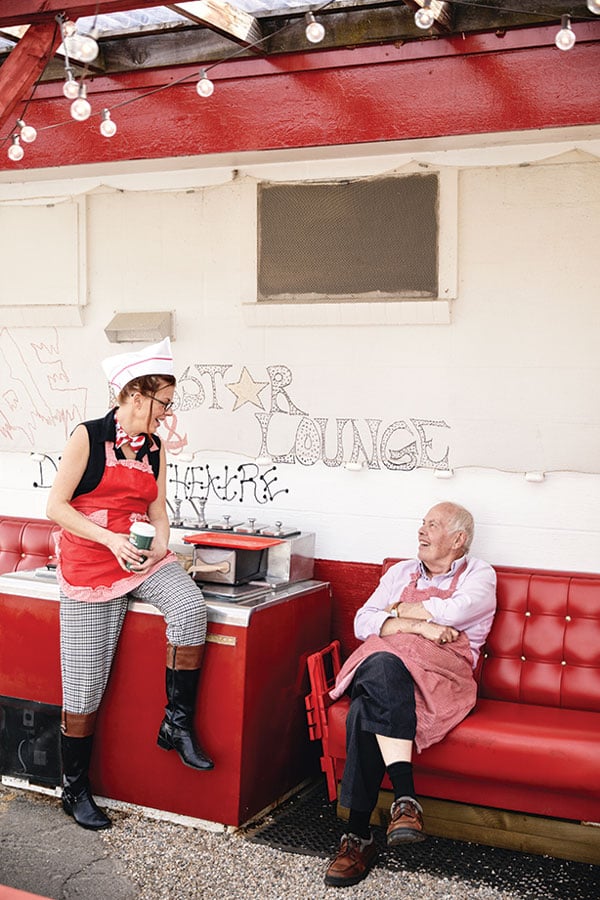
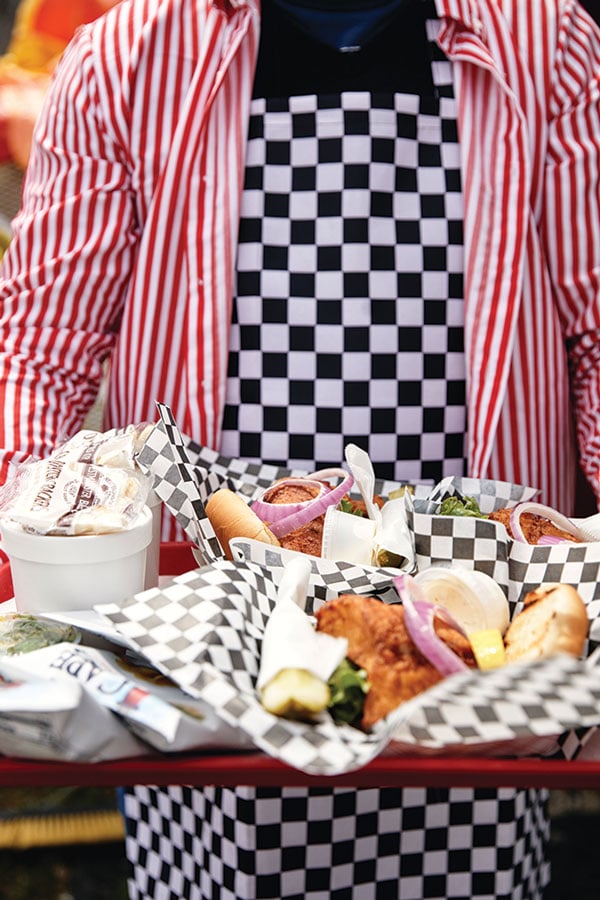
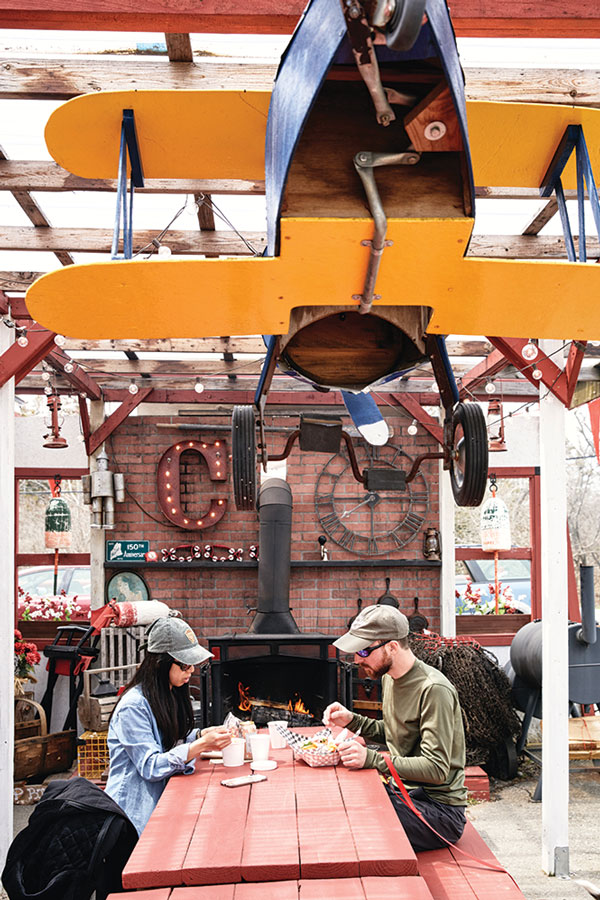
“Look at what is allowed in our food,” she said to me. “Arsenic is allowed. Mercury is allowed. But you want to put a plant in there, and all of a sudden you have a problem.” (Of course, the FDA does set maximum levels for arsenic and mercury in foods, although they’re environmental contaminants, not additives.)
After eating a lot of weed-treated lobster last year, Gill’s 83-year-old father, an Episcopalian minister, took a drug test. It came back negative for THC. And Gill is raising funds to have an independent cannabis-testing lab analyze the lobster meat. If the test shows an absence of cannabis, she could present the results to the Health Inspection Program for consideration.
In the meantime, she has settled on liquid valerian extract as an alternative, putting a few drops in water so that lobsters can soak it in before they get cooked. A common remedy for sleeplessness and anxiety, valerian also happens to be an FDA-approved flavor enhancer, so state health inspectors have no problem with it.
State veterinarian Michele Walsh, on the other hand, has concerns. Although valerian is fine to use as a food additive, Gill administers it to live lobsters — or, in other words, lobsters that aren’t yet food. It’s a strange circumstance. When I talked with Walsh, she described the situation as “uncharted territory.”
She thinks Gill is actually using valerian as a veterinary drug — especially on account of touting its sedative properties — an application the FDA has not approved of. But Walsh also concedes that the feds are unlikely to look into this. It’s an isolated, anomalous matter. And anyway, Gill believes she has found something of a loophole: When I ducked in her kitchen to check out the valerian process, she emphasized several times that, even though valerian conveniently has a sedative effect, the ultimate goal is to improve taste. “The flavor is enhanced because the stress hormones are so diminished,” she suggested. “The meat tastes lighter, sweeter, happier.”
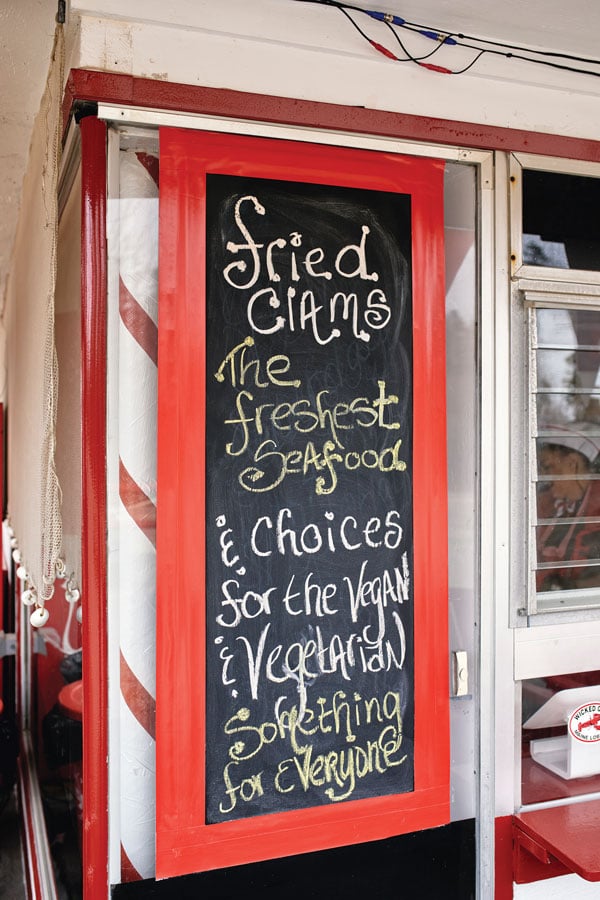
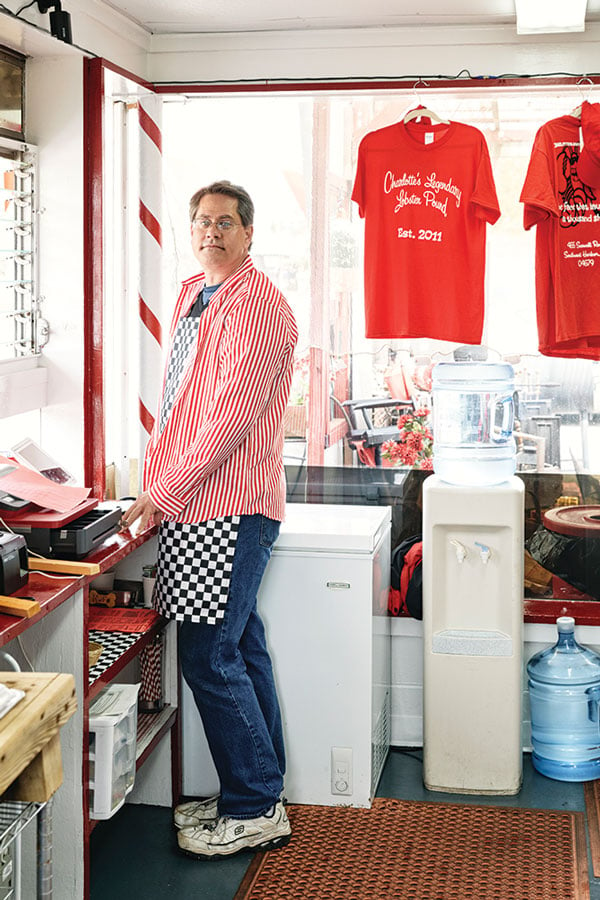

The several valerian-treated lobsters I saw certainly looked relaxed, sprawled motionless on a metal countertop. Soon, chunks of one of those lobsters were tossed in mayo and wedged into a toasted bun for me. The lobster roll was great, my first of the season, but I don’t think I picked up on any subtle notes of happiness.
If Gill should ever get approval to bring high-end lobster to market, she has a new bake box at the ready. It’s a blue fiberglass tank big enough for 30 lobsters, fitted with a glass lid. An air-mattress pump moves smoke through the drain spout. Eventually, she’d like to give her customers a choice between lobsters dosed with cannabis or valerian — or even cannabidiol, the non-intoxicating cannabis compound known as CBD. “Some people are always going to be opposed to cannabis,” she said, “but no matter which method, it’s got to be a compassionate process here.”
ON MY MOST RECENT VISIT to Charlotte’s Legendary Lobster Pound, Gill invited me to a demonstration. I hopped into her Honda Element and we bounced down the road past the rocky Seawall shore to the house she rents. Inside, she handed me one of the small prototype bake boxes made from a plastic container, plus one of those claw-shaped pipes. Then, she grabbed a lemonade pitcher full of weed. How much, I wondered, does it take to chill out a lobster?
Next, we stopped at the C.H. Rich wharf, in Bass Harbor, where Gill goes when the pound runs low on lobsters. As we drove back to the shack, a dozen or so freshly caught lobsters clattered away in a crate in the trunk, while the pitcher of weed rolled around in the back seat, suffusing the car with an unmistakable dankness.
At the pound, Gill had me pick out two lobsters, which she put into the bake box with some water. One of her staffers, Jenny Neuman, left the kitchen — it was a slow afternoon — and joined us as we loaded onto a minibus that Gill owns, parked on a separate property from the pound. The sun was baking the red vinyl seats. “All aboard!” Neuman yelled, and Gill closed the door, the heat swelling.
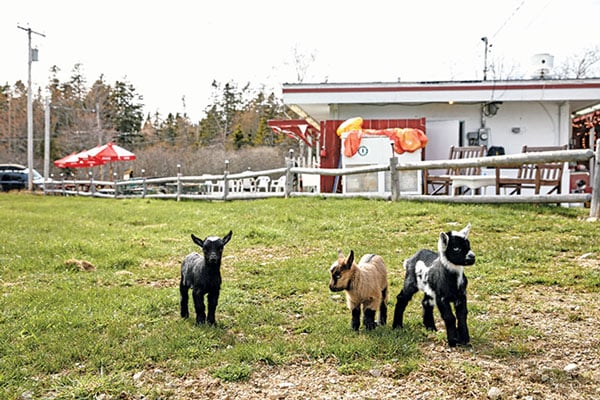
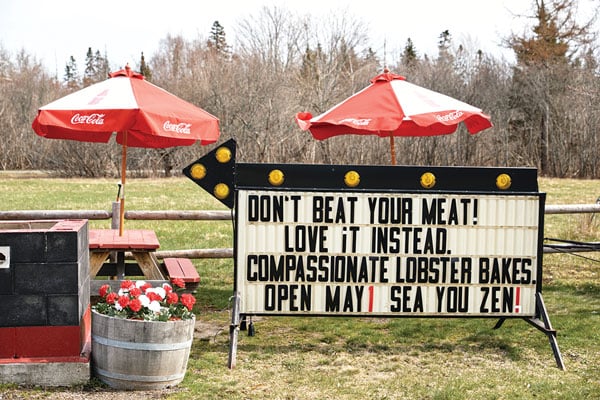
She packed the claw pipe with a couple of pinches from the pitcher, lit it, and passed it to Neuman, who sat across from the box. She took a puff, leaned over, and blew into the straw. The water inside gurgled. Gill, kneeling in the aisle, did the same.
“Jenny was with me all those years when I didn’t want to kill lobsters anymore,” Gill said.
“And I was like, ‘No! Are you insane?’” Neuman replied. “‘I know you love creatures, but babe, this is a lobster pound. What are you going to do? Make it a salad shop?’”
Gill passed the pipe again. “I shouldn’t have partaken in the experiment today,” she said. “But the good news is that the weed definitely works.”
After a few minutes, she popped the lid, and the smoke wafted out. Gill grabbed a lobster to see if the cannabis had its intended effect, then laid it lengthwise on her forearm, the unbanded claws resting on her hand. I picked up the other lobster. I’d never taken such a good, long look at a live one before. The feathery swimmerets under its tail. The intricate architecture of its shell. Its pearlescent eyes glinting a deep purple. For a while, we were quiet.
I asked what they’d do with these two. Gill said it was up to me, then put them in a container for me to take home. I said I thought I’d drop them back in the ocean once they seemed to have their wits about them again.
“You’re not going to eat them?” Neuman asked.
In that moment, I couldn’t really fathom it.



